The Biggest SEO Trend You’re Ignoring

The screenshot above is my Google traffic over the last 12 months.
As you can see, my traffic is growing. And there are many reasons for that, but there is one trend that’s really caused the majority of my SEO growth.
You might be thinking it is Ubersuggest because it makes up 22.4% of my traffic now. But Ubersuggest has been integrated into NeilPatel.com for years, so that’s not it.
Sure, that is responsible for some of my growth, but it’s not responsible for it skyrocketing like it has been.
So, what do you think it is?
Well, I’ll give you a hint…
My traffic per region
Let’s look at my SEO traffic in a few different regions.
Here’s my traffic in the United States over the last 12 months:
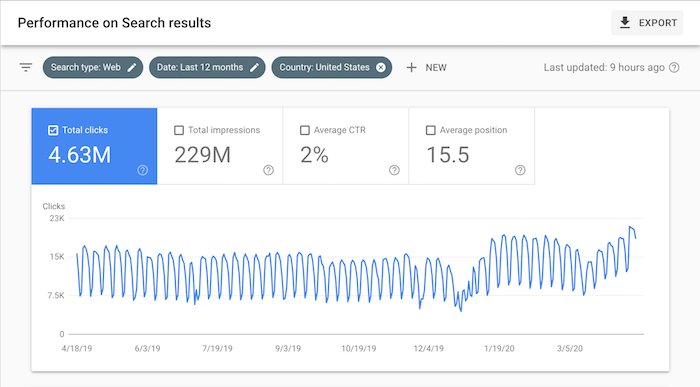
Now here’s my traffic in the United Kingdom:
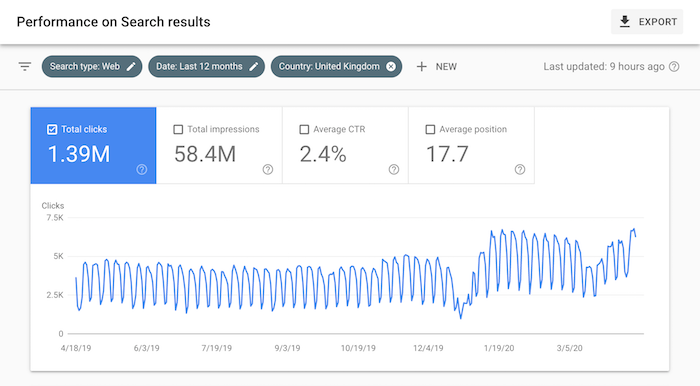
And here are the stats for Canada:

And Australia:
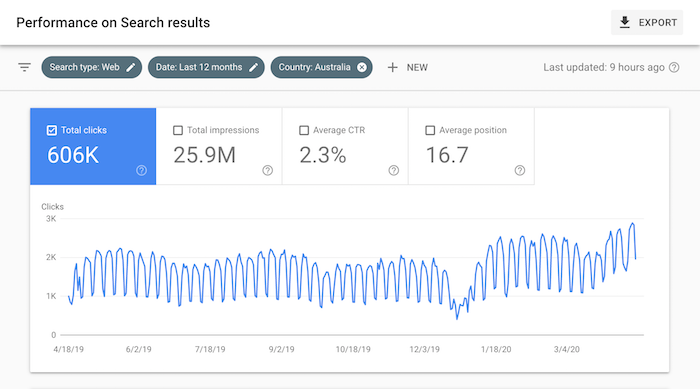
You can see that they have all increased, but not enough to cause the big spikes.
Now let’s look at some of the international markets we have been focusing on over the last few years.
Here’s Spain:
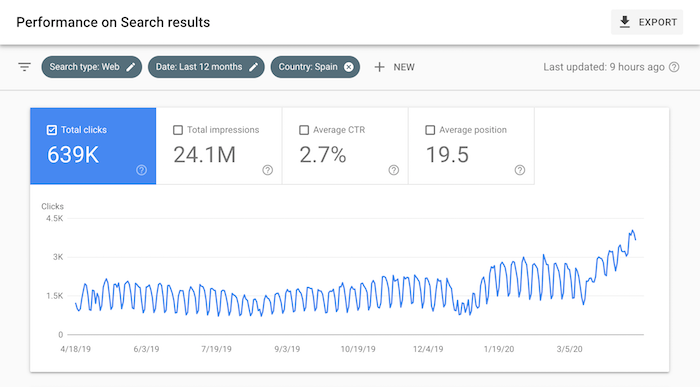
Here’s India:
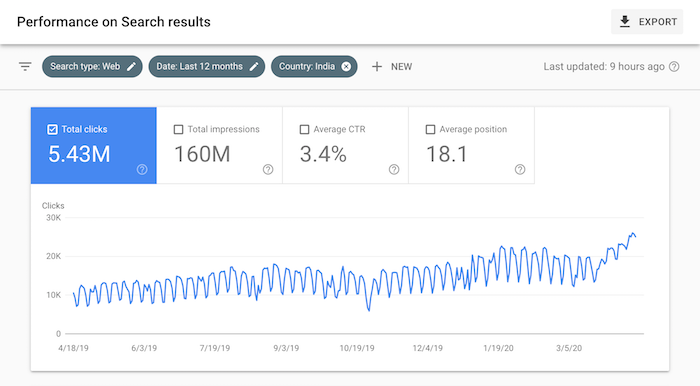
And here is the first international market we expanded to, Brazil.
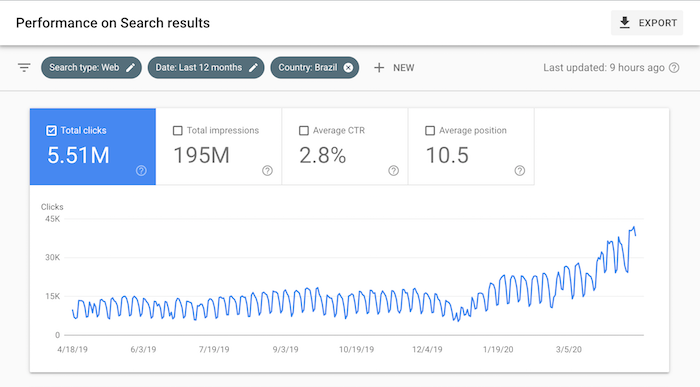
As you can see, the international markets are growing at a much faster pace, especially Brazil. But that is because we have been focusing on our SEO in Brazil more than any other country (outside of our main English markets).
Why you may ask?
Because a Google employee told me to
The most vital SEO lesson I learned came from a friend at Google, but they didn’t tell me anything that was really a secret…
They told me that the majority of the searches on the web aren’t done in English, they are done in other languages.
And in the English markets, everyone is competing, which means tons of sites and content from Google to choose from when it comes to determining which site should rank number 1 for any given keyword.
But the international markets are the opposite. There is a lot of demand but not enough sites for Google to choose from when it comes to rankings.
So even though there are tons of algorithm updates and SEO is becoming more difficult, it isn’t always the case with many international markets.
And the graphs above show it. As you can see, I’m getting huge traffic growth in those regions.
So, what should you do? Especially if you are starting off and don’t have a big budget or any budget for that matter…
Follow Amazon
Wherever you see big corporations like Amazon investing, it means there is money to be made in those regions.
Amazon has invested billions into regions like India:
- Amazon originally decided to take a long view on India and invest 2 billion dollars.
- Then they decided 2 billion wasn’t enough so they increased it to 5 billion.
- And then they decided to add in another 2 billion dollars.
- Amazon is investing a billion dollars to digitize small and medium businesses.
It’s safe to say over the years Amazon will poor in well over $10 billion into India.
That’s a big bet for someone to make. And you can assume it’s a calculated bet because they think there is much more money to be made.
And it’s not just India…
Amazon is investing $236 million into Brazil to boost up their cloud infrastructure. And they’ve invested over $2.26 billion dollars in France. They are pretty much going after the whole world.
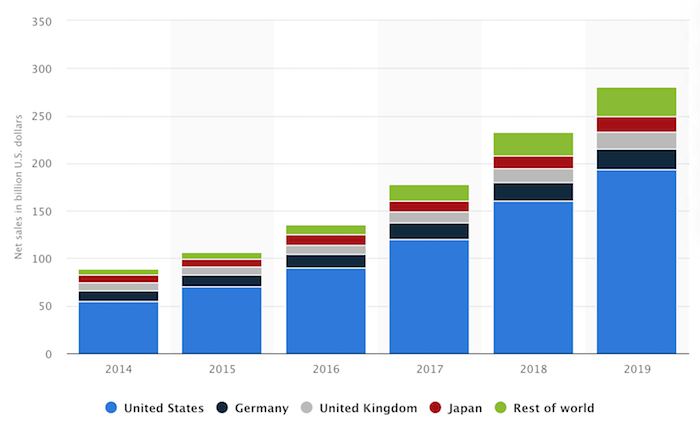
As you can see from the graph, Germany is its second-biggest market and Japan is also up there. But what’s interesting is the green bar as that represents the “rest of the world” and that green bar has been growing at a fast pace.
Now, I get that none of us are Amazon and we don’t have huge budgets, so I wanted to take a minute and break down how you can do this on a global scale without breaking the bank.
International SEO on a budget
When I first started to expand internationally, my business was much smaller and we didn’t have much money, if any, to spend on international SEO.
Yes, I am an SEO, so you would think that it makes it easier, but not really because the only language I am fluent in is English.
And if you fast forward to today, I’m still only fluent in English, but we have 7 offices around the world.
And we did it without laying out any of our own money. Yes, it did take time and it will for you too, but that’s the only way to do it when you are starting off and are small.
So how did we expand internationally without spending upfront?
We partnered with locals.
Why not find people in these regions who speak English as well as the local language of the country you are trying to expand to?
There are so many people without jobs, you’ll be shocked by how many people will be open to a partnership. All you have to do is look at Facebook groups and forums to find people in your space who live overseas.
Here’s how I structure each partnership:
- I have the person, or a group of people, translate my content to that region’s language.
- I have them read my English blog posts so they can learn SEO (if they don’t already know it… nowadays I look for people who already know SEO as I have been doing this long enough and can spend some money).
- In exchange for them growing my traffic in that region, I give them a portion of the profits I make within that region. You can structure where you give them anywhere from 10% to 30%. You don’t want to go too low on the profit-sharing as you want them to work hard, but you also don’t want to go too high where you are giving away everything.
- They put in the work each day, and they have 3 months to show some traction, and within 6 months they should have significant growth. Keep in mind it is less competitive, so it is easier to get results. You can also work with them on creating goals and milestones.
- If they don’t show results, the partnership ends, and I don’t have to give them anything. If they show results, we keep pushing forward.
Now that we’ve covered structuring your international SEO expansion, let’s go over how you do it.
International SEO
I’ve written a handful of blog posts that break down the steps on growing your traffic in new languages and countries, but before I share them, I wanted to break down the 2 biggest lessons I learned:
- Transcribe the content, not translate – when you work with a partner overseas, they may think you want your content translated or that you want content written in their language just like how people would write the content in the US. That won’t work because cultures are different and keywords are different, so transcribe the content and adjust it to each country.
- You want a partner that lives in that country – if you expand into a country where you don’t have a partner on the ground you won’t see great results. By having people on the ground, you can more easily build up your brand, which has a big impact on rankings.
Here are some resources that will show you how to do international SEO:
- This post will break down how to create a global SEO strategy.
- And follow this to setup SEO correctly for different languages and countries. Keep in mind that Google doesn’t penalize for duplicate content, so don’t worry about having similar content or the same content for different regions.
- Here’s how to expand internationally profitably.
- This will teach you the fundamentals of reaching a global audience.
Funny enough, one of the reasons I created Ubersuggest was to build a tool that would help my team and I expand internationally.
Here’s a feature in Ubersuggest that will help you, that most people don’t know about.
So head over to Ubersuggest and type in a competitor that you know is big and has a global presence.
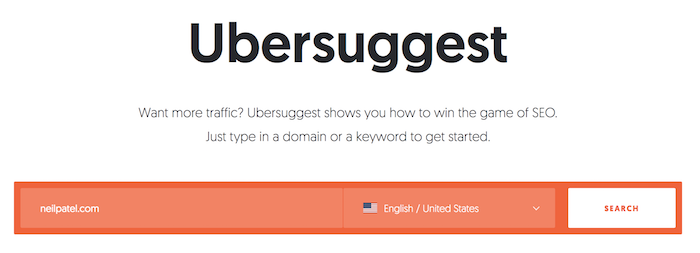
I want you to click on the “Top Pages” navigational option in the sidebar.
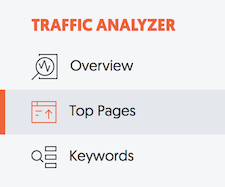
This shows you all of the top pages that your competitors have.
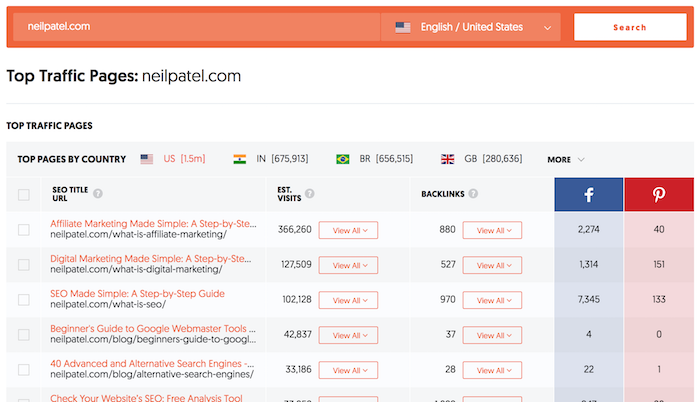
But don’t focus on those results. I want you to look at the regions that make up some of your competitions’ traffic… you’ll see that number next to each flag.

Click on one of the regions that you are considering expanding into. You’ll now see the results adjusted.
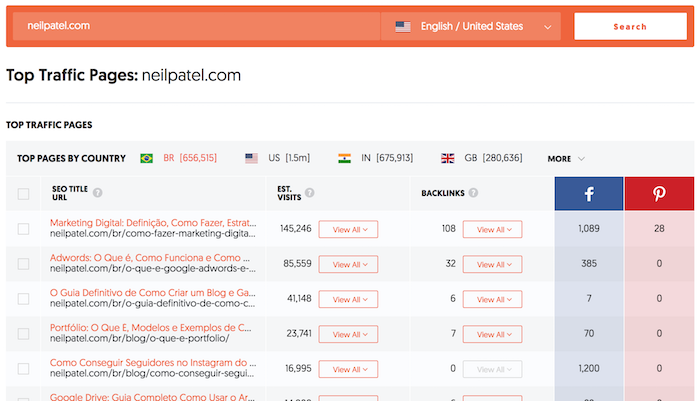
As you can see from the screenshot above, those are all of the pages on my site that are really popular in Brazil.
Now, I want you to click on “view all” under “Est. Visits” as that will show you all of the keywords that drive traffic to that page.
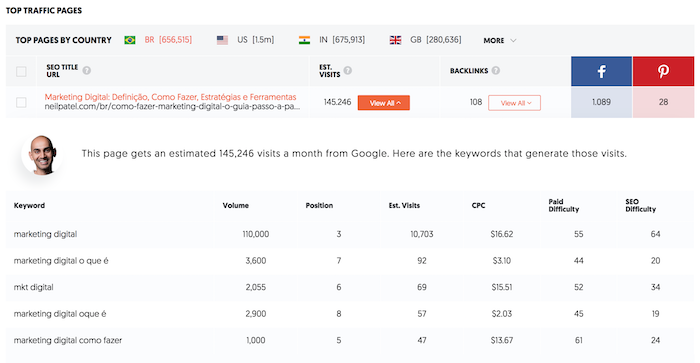
This will provide you with a laundry list of international keywords that you can give to your team so they can start creating content to go after them.
I also want you to click on “view all” under “Backlinks” as this will show you who links to your competition. You can then create a list of sites to reach out to so you can get them to link to you.
That’s the simple strategy we used to hit it hard in regions like Brazil and what we are also doing in countries like India, Spain, Mexico, France, Germany, and countless other countries.
Conclusion
English is a great language. And I love the United States as well as other English-speaking countries.
But that’s not where the opportunity is. There is more opportunity in global markets, which is why you need to follow the trend of international SEO.
Even if some of these countries don’t have as high of a GDP compared to the United States, it’s fine. Remember there aren’t as many competitors, which means you will have a lot of opportunities to still do really well.
So what region are you going to expand to first?
The post The Biggest SEO Trend You’re Ignoring appeared first on Neil Patel.
from Neil Patel https://ift.tt/34UIBQA
No comments